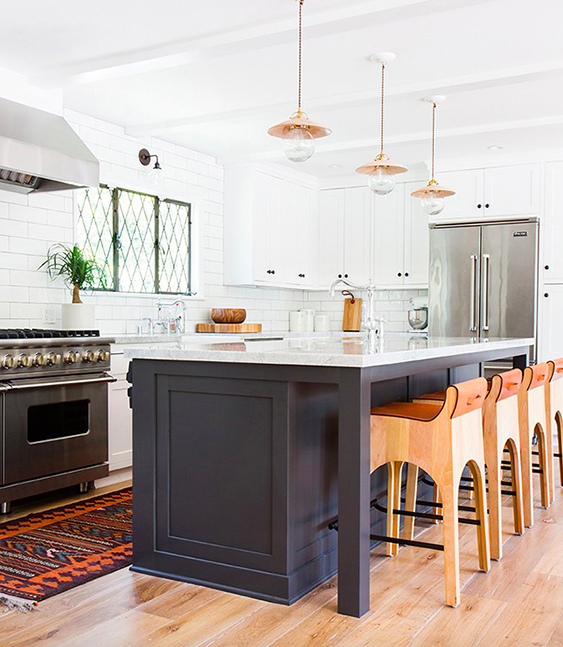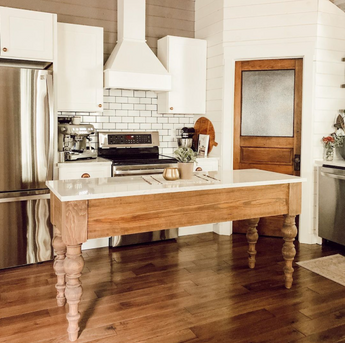Just how to Incorporate a Kitchen Island Leg into Your Kitchen Remodel
Just how to Incorporate a Kitchen Island Leg into Your Kitchen Remodel
Blog Article
The Value of a Sturdy Cooking Area Island Leg in Creating a Useful Cooking Location
A strong kitchen island leg offers as a fundamental component in developing a practical cooking setting, supplying necessary assistance for both the kitchen counter and various cooking area activities. As kitchens progress right into multifunctional locations for food preparation, eating, and socializing, the option of materials and layout factors to consider for island legs becomes significantly crucial.
Advantages of Sturdy Island Legs
Providing vital support, durable kitchen area island legs play a crucial duty in improving the functionality and sturdiness of kitchen islands - kitchen island leg. These legs not only bear the weight of the kitchen counter and any extra things put on the island, however also contribute to the general stability of the structure. A well-supported kitchen area island makes sure that it stays useful and upright, also under hefty use, which is particularly essential in hectic kitchen settings
Moreover, strong island legs can boost the aesthetic charm of the cooking area. They provide a strong structure that can match various style styles, from modern to typical. This versatility permits property owners to tailor their cooking area islands according to personal preference while making certain that the structural honesty stays uncompromised.
Along with their helpful duty, durable kitchen area island legs can also enhance safety and security. A secure island decreases the threat of accidents triggered by tipping or tottering, which is specifically important in families with kids or senior people. Moreover, solid legs can facilitate a seamless circulation of activities, enabling for reliable meal preparation and social communications within the kitchen area area. Eventually, spending in durable kitchen area island legs is vital for a useful and aesthetically pleasing cooking location.
Products for Kitchen Island Legs
When selecting products for kitchen island legs, durability and visual appeal are critical aspects to consider,. One of the most common materials include wood, steel, and crafted timber, each offering special advantages.
Hardwood, such as cherry, oak, or maple, is a traditional option because of its strength and classic elegance (kitchen island leg). It can hold up against considerable weight and is resistant to put on, making it excellent for high-use cooking area atmospheres. Additionally, hardwood can be tarnished or painted to enhance different cooking area designs
Steel legs, typically crafted from stainless-steel or functioned iron, provide a industrial and contemporary appearance. They are exceptionally solid and can sustain substantial tons while being immune to dampness and heat, which is advantageous in a cooking area. Steel legs can additionally be quickly cleaned, enhancing their practicality.

Style Factors To Consider for Stability
The choice of materials for kitchen area island legs straight influences the layout factors to consider for stability. When designing a kitchen area island, it is extremely important to assess the weight-bearing capability of the chosen materials. Much heavier materials, such as solid timber or metal, usually provide greater stability, especially under the stress and anxiety of everyday usage.
Additionally, the leg style have to integrate proper geometry to boost stability. A larger base enhances the assistance location, decreasing the danger of wobbling or tipping. Consideration needs to additionally be offered to the height of the legs; disproportionate leg lengths can result in imbalance, endangering the overall stability of the island.
In addition, the circulation of weight throughout the island is crucial. Making certain that the leg positioning aligns with the heaviest components, such as countertops his explanation and home appliances, will certainly additionally boost stability.
Upkeep Tips for Long Life

Cleaning is another vital element of upkeep. Relying on the material of the legs-- whether timber, steel, or composite-- suitable cleansing techniques should be utilized. For wooden legs, a mild wipe with a wet towel and an ideal timber cleaner will assist preserve their coating. Steel legs might call for a light gloss to stop corrosion and maintain their radiance.
Furthermore, tightening up bolts and screws regularly can ensure security and avoid tottering. If the cooking area island experiences hefty use, think about strengthening the legs with additional braces or supports to improve toughness. Lastly, using a safety finish or sealant can protect versus moisture and discolorations, prolonging the lifespan of the legs. By adhering to these upkeep suggestions, property owners can ensure their kitchen island legs continue to be useful and durable for years ahead.
Choosing the Right Leg Style
Regular maintenance makes certain that cooking area island legs remain practical and strong, however picking the right leg design is equally vital for both appearances and support. The selection of leg discover this design can substantially affect the overall style and consistency of your kitchen area.

Capability is another important element. For example, thicker legs or those with a tough base can support larger counter tops and equipment, boosting the island's utility. Conversely, slender legs may develop a ventilated appearance, appropriate for lighter styles but potentially less helpful.
Verdict
In recap, the value of tough cooking area island legs can not be overemphasized in the creation of a functional cooking area. These legs provide important assistance, enhance stability, and add to try this web-site the overall aesthetic of the kitchen. By meticulously choosing suitable products and designs, along with carrying out appropriate upkeep methods, the longevity and efficiency of kitchen islands can be ensured. Eventually, buying durable island legs is essential to accomplishing a risk-free and efficient culinary setting.
A tough kitchen island leg serves as an essential component in developing a useful food preparation environment, providing essential assistance for both the counter top and various kitchen tasks.Providing important assistance, durable kitchen island legs play a critical role in boosting the capability and sturdiness of kitchen area islands. Ultimately, investing in durable cooking area island legs is necessary for a functional and aesthetically pleasing cooking area.
Consideration must also be given to the height of the legs; out of proportion leg sizes can lead to imbalance, jeopardizing the general security of the island.
Wood legs provide heat and a classic look, while steel legs supply a modern and commercial feel.
Report this page